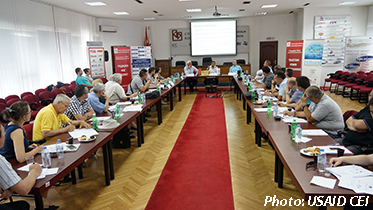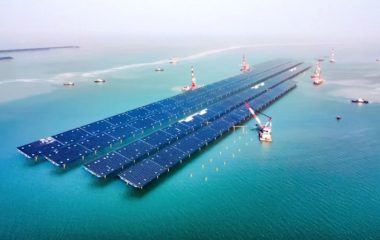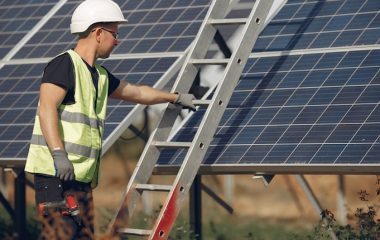
The USAID Macedonia Clean Energy Investment Project and the Renewable Energy Association within the Economic Chamber of Macedonia organized a round table on the open issues and possible solutions for implementation of the initiative for placing photovoltaic (PV) systems on the rooftops that will generate electricity without using Feed-in tariff (FiT), due to the high interest among the investors and experts.
The round table took place in Skopje, gathering more than 30 persons from the public and private sector, experts and representatives of donor community. Prof. Dimitar Dimitrov from the Electro-technical Faculty in Skopje gave keynote presentation, followed by representative of EVN – electricity distributor, who addressed the main technical and financial aspects.
During the discussion, the participants gave their opinions on the following open issues: maximum installed capacity of PV system per facility; subjects who should benefit (install the PV system) – only households or collective residential and commercial buildings and small industrial facilities; optimal electricity exchange ratio and interval between the household and the supplier; obligation for VAT invoicing by individual household; treatment of the household – electricity producer who needs energy license.
“My analysis show that the optimal installed capacity per household is 2 kW (monophase) or 4,6 kW (three phase system) and that the period for return of investment is less than 5 years. Macedonian energy system needs and can easily absorb installation of 10.000 PV systems on the roof tops.” – said Zvonko Markovski from SIETO, owner of two PV power plants.
The conclusions and recommendations stemming from the discussion were disseminated among the participants and will be also shared with the relevant Government officials and institutions. The basic idea behind this initiative is that electricity generated from the PV panels, with an installed capacity of up to 10 kilowatts per building, will cover the households’ and companies’ own needs. Any surplus could be sold on the energy market through the electricity distribution network. A FiT will not be granted to producers. Several pieces of legislation need to be reviewed and revised for this to be instituted.

















